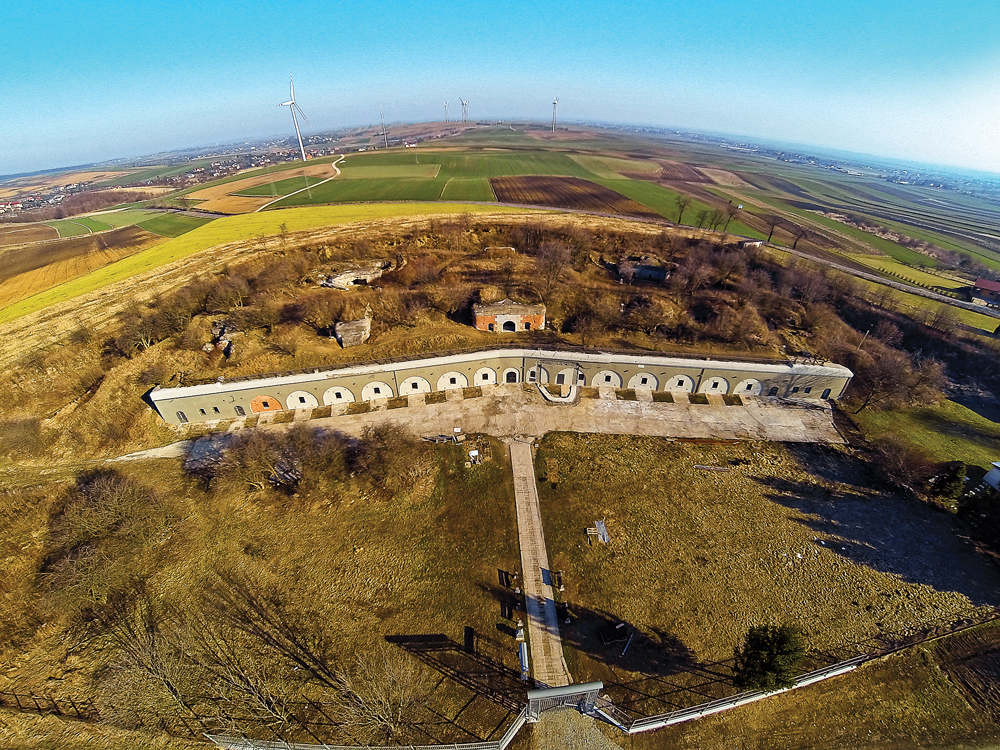International Conference “Fortresses of Tomorrow“ supported by Central European Initiatives (CEI) was held at the facilities of the Art Association Inbox associated with civil organization Suburbim during 19. Festival of Street Musicians in Lower Town of Petrovaradin Fortress from 30-31. August 2019.
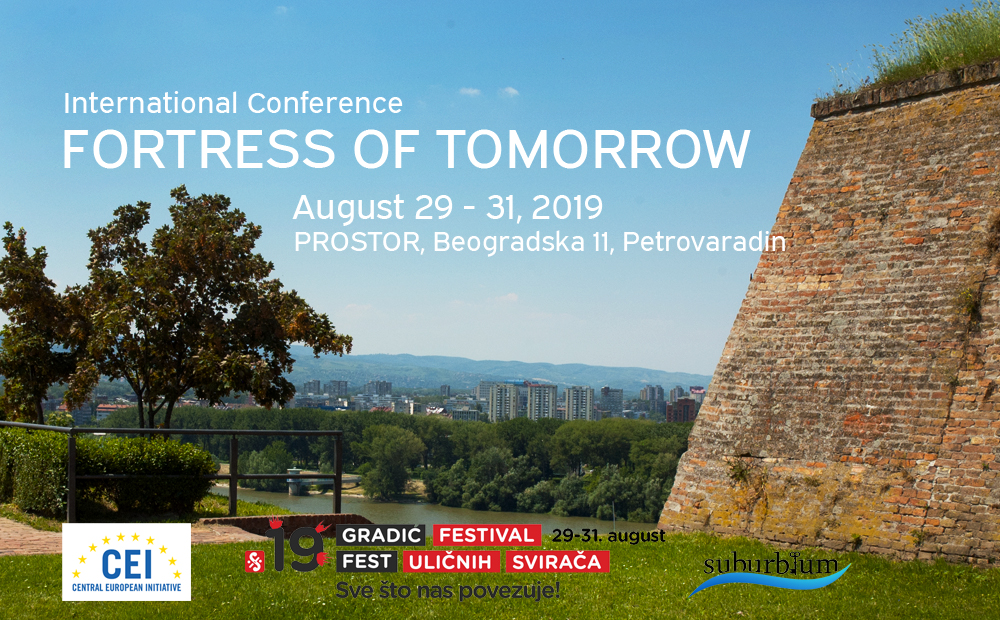
Zlatko Uzelac, Institute of Art History, Zagreb, Croatia. Introductory: Fortresses of Tomorrow
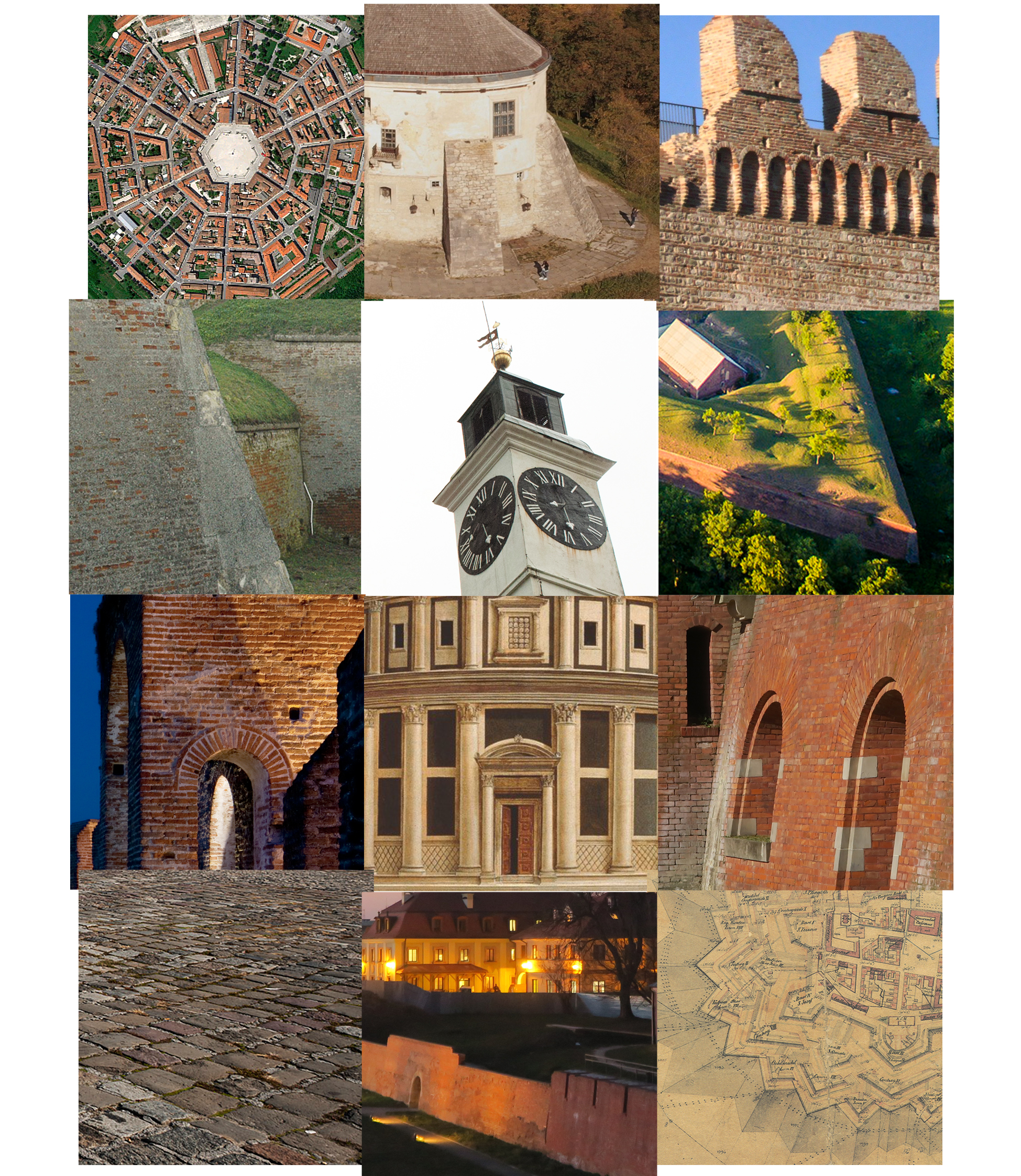
Town(city)-fortress is very specific form of towns or cities in urban history. Emerged from the renaissance theories of “ideal cities”, connected from the beginning with the inventions of the best forms for defense from rising power of artillery, it started to develop in late renaissance and mannerism in the last quarter of 16ct. Built regularly on strategically most important points, with very strong and sometimes enormous defenses, it containsin the contrary to the idea of “ideal cities”, barracks for regular army, but mixed together with civil settlement.In further development during 17 and 18ct, mostly marking the war borders of Europe,lines of strongly fortified old historical towns and in some cases new planed, formed the whole clusters of star-fortresses. Serving up generally until mid19ct, theystay more or lessin military use generally until the fall of Berlin Wall andsometimes even until now.Suddenly freed from theiroriginal use, empty ex barracks andother left military old infrastructure, including historical defense architecture, became problem for historical core ofmany town-fortresses. In the last few decades, trying to find the best way for re-use of sometimes very large ex-military space,saved as historical and architectural heritage but often in their bad or very bad conditions, we can find very interesting examples of good practices and solutions in many different cases.Some of the best results we experienced with the cases wheremilitary architecture is transformed into the space for education and culture, where architecture of war is changed intonew urban centers of knowledge and youth. But what is missing now is not only better and intensive exchange of the results, ideas and practices. What we need is development of historical town/city-fortresses, once connected into the clusters of strongholds for border wars,to a new connected and interactive “star fortresses”, future clusters of strongholds for sciences and culture.
Vasyl Mytsko, “ Borys Voznytsky” Lviv National Art Gallery with Viktor Kushnirenko, director of Pidhirtsi Castle Charity Foundation Lviv, Ukraine: Protecting 4 fortresses around Lviv. From quantity to quality
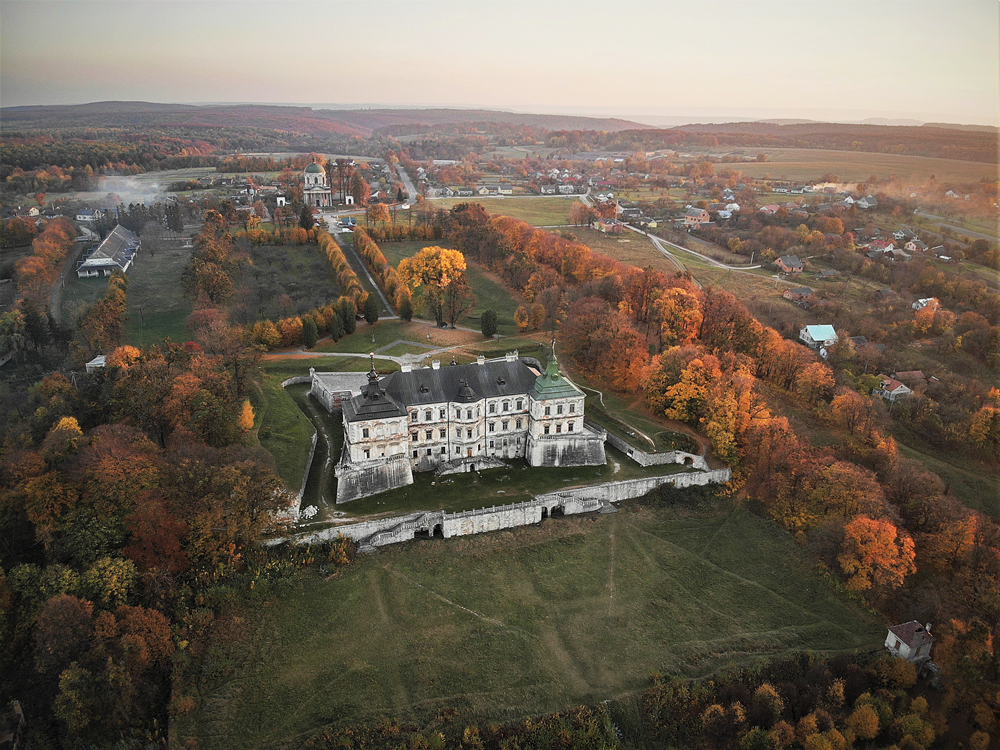
The Borys Voznytsky National Lviv Art Gallery (hereafter referred to as the Gallery) is one of the largest museum organizations in Ukraine and is unique for the reason that among our 17 museums in the Lviv region, 4 of them are fortresses. All of these fortresses are quite different from one another, with differing opportunities for exhibitions,hosting visitors, and in their need for further infrastructure consideration. The biggest challenge facing the Gallery right now is the restoration of these fortresses. The first fortress to be added to our museum organization is a castle in the small town of Olesko. Its building began in times of Galician Ukrainian princes in the 13th century. After a great fire in 1951 left behind the walls and little else, the castle was restored in accordance with «Soviet» standards, not progressive ones. Its custody was subsequently transferred to our museum and the castle was opened to the public together with its new exhibition in 1975. The second fortress in the Gallery’s collection is Zolochiv Castle complex situated in the same named city, currently with 24 thousand inhabitants. The castle was erected in 1634 as a defensive fortress, on the site of an old wooden castle surrounded by powerful earthen ramparts covered with stones. Recent studies have shown that late seventeenth century palace, one of two places also known as the “Chinese Palace” for its architecture,was once a stone defensive tower of an earlier period. It was commissioned by King of the Commonwealth Jan III Sobieski for his wife. A thorough restoration of the complex started upon its being transferred to the Gallery in 1986, and finished in 2009. Pyatnychany Tower is a defensive 2 story building with a basement in the village of Pyatnichany. Its construction is typical of 14-15th century buildings in Western Ukrainian land. In the 1980s the tower transferred to the Gallery and a restoration was carried out. The last of the Gallery’s castle-museums is the largest, the most exquisite and the most in need of work. It is the palace-fortress in the village of Pidhirtsi. From 1635 to the 1640s the palace was built by architect Andrea Del Aqua at the request of the Crown Hetman of the Commonwealth Stanislav Konecpolsky.The project was created by the famous fortification architect Guillaume Levasser de Boplan. In 1956 a great firecaused grave damage to the castle, completely destroying all its luxurious interiors. After the war and further after repair, it became a tuberculosis sanatorium. The Castle would eventually be turned over the Gallery in the 1990s. In 2008, it was added to the World Monuments Watch list as one of hundreds of monuments of exceptional value and in danger of destruction.
Vasil Strilchuk, Iryna Strilchuk, Brody historical and local museum, NGO "Krai", Brody,Ukraine: Brody Fortress - from the past to future
.jpg)
Brody Castle (fortress) is a state-owned monument. Brody is a city in Lviv region on the West of Ukraine, which is located on a flat wetland in the past. The settlement emerged as a security point for the ford-crossings, from which it got its name. The first written information dates back to 1084. The strategic location of the territory also necessitated its protection, which is why defense buildings appear here. Brody turned into the perfect fortress city with a powerful citadel in the XVII century. Despite the difficult historical events, the ups and downs, the great battles of the twentieth century, Brody has preserved a unique planning system and many historical and cultural monuments, the oldest of which are preserved buildings of the Brody Fortress. After the events of World War II, Brody Castle lost its importance and any cultural value to people. The demographic composition of the local population has almost completely changed. Throughout the period of Soviet rule, there were various military units in the Brody Fortress. From 1963 to 1993, the castle premises were refurbished and used to house a military engineering and repair base known as the “criepost`” among Brody residents. The attempt to restore the architecture monument came after the Orange Revolution of 2005 under the presidency of Viktor Yushchenko. In 2014, the document "Historic and architectural reference plan of the town of Brody" was prepared, with the definition of the historic area of the ideal fortress city. However, the problem of the complexity of saving the whole castle complex became evident. Since there is no funding, support from the state and local authorities, the main focus was on activating the local community. Among the various groups that worked, the main goal was to revitalize the Brody Fortress, as a potentially powerful cultural and artistic center, and the public space of the city. According to the results of the project, a letter from NGO “Krai” was sent to the city council of the city about the need for the local authority to take an active part in the process of saving the fortress and to start a dialogue with the balance holders of the monument - the LODA architecture department. Today the Brody Fortress complex needs conservation: stopping the destruction from adverse weather conditions and human intervention. The city lies on the Via Regia, the Council of Europe's cultural path (the Brody Museum of Local History is a member of the network). Consideration should also be given to including the Fortress of Brody in the European Cultural Route “Forte Kultura”.
Cristina Candea, RYMA NGO, Alba Iulia, with Marcel Bajka, Intercultural Institute, Timisoara, Romania: Alba Iulia Fortress – becoming a touristic destination
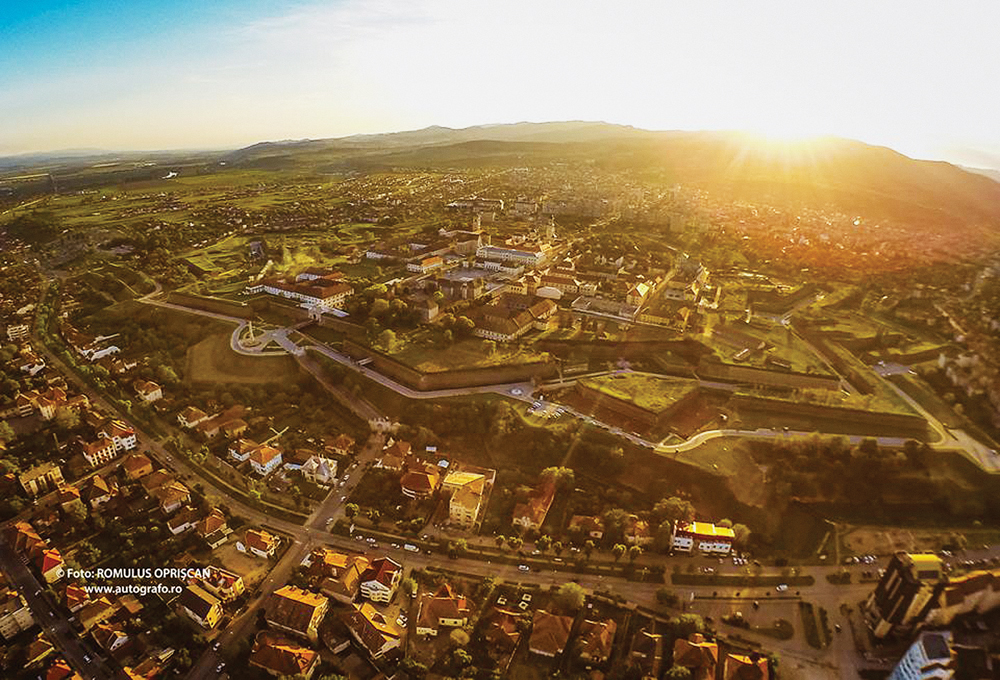
Alba Iulia is located in the south-western area of Transylvania and is the seat of Alba County. The town is at an altitude of 270 m, being set near Mure River, within the limits of the Ampoi and Sebe Rivers, the Apuseni Mountains and the Transylvanian Plateau. Alba Iulia has a wonderful relief, being guarded in the east by the heights of the Metaliferi Mountains with Mammoth Peak and in the West by the hills of the Transylvanian Plateau. Alba Iulia is divided in the so-called “Lower Town” and “Upper Town” (the new town), due to its geographical layout on two terraces of the Mure River. From 2011 has become one of the European cities with a touristic and commercial brand, having developed a logo, a brand manual and a long-term marketing strategy. The slogan “The Other Capital,” along with the promise “Welcome to the Largest Citadel in Romania” are the two messages promoting the city. Alba Carolina Citadel, which has been involved in a large-scale restoration process since 1998, has become the central point of the city and the most important tourist attraction. Alba Carolina Citadel is on the waiting list for being included in UNESCO World Heritage List. In 2014, the city’s budget for investment was directed to the completion of the works inside the citadel and restoring its bastions, rehabilitation of the Olympic swimming pool, development of a skate park, as well as other urban projects important for the local community. Alba Iulia was included in the Guinness World Records in 2009, for the largest group hug, a project initiated by the Alba Iulia Municipality. The Great Hug was attended by almost 10,000 people. For the way the Alba Carolina Citadel has been restored and promoted, the Municipality of Alba Iulia received the award of the “Europa Nostra” organization. Alba Iulia has the ambition to become the first smart city in Romania. The pilot project "Alba Iulia Smart City 2018” following a protocol signed with the Ministry of Communications. Since then, the Alba Iulia City Hall has concluded partnerships with several companies in this regard. According to the data of the mentioned Association, there are 60 projects and dozens of partners. The concept goes beyond the relationship between citizens and public service providers and offers the tools that encourage citizens to be more active and participatory in the life of the community. ( Source of information, Alba Iulia City Guide)
Bogusław Szmygin, Lublin University of Technology, Poland: Zamość - protection and development of ideal city in fortress

Zamość (Poland) is the ideal city built at the end of the 16th century, which is located in the fortress built from the 17th to the 19th century. Fortifications and the city have been inscribed on the UNESCO World Heritage List – they are under strict conservation protection. The fortifications are protected in historic form but historic city must meet contemporary functions and standards. To combine the protection and development of the city in 2019 the Management Plan has been elaborated for Zamość.
The following 3 elements have had a significant influence on the sustainable development strategy as presented in the Management Plan for Zamość.
Holistic approach to the historic urban area of Zamość. Traditional approach to historic urban areas focused on the form and substance of the historic urban area - its architecture and urban planning. The contemporary attitude towards heritage (expressed in UNESCO HUL Recommendation) has added other elements, such as contemporary functioning of the historic urban area as well as its residents and tourists.
Differentiation of the value of the particular elements of Zamość historic urban area. In the traditional approach to historic urban areas all elements were seen as equally valuable - all elements should be protected in a similar way.According to the HUL Recommendation, the historic urban area is a “living space” which has to transform to some extent. Consequently, it is necessary to determine which elements must be rigorously protected and which of them may be transformed to some extent.
Recognition that it is not only protection that matters in the case of historic urban areas but also their contemporary functioning and development. In the traditional approach the conservation officers are concentrated only on the protection of the value of historic objects and tended to ignore their functional aspect. According to the HUL Recommendation, a program of protection of historic urban areas should also include contemporary needs of their residents and provide a possibility for contemporary functioning of these areas; also creation the conditions necessary for the development of sustainable tourism.
The above-mentioned elements allowed to prepare the Management Plan of Zamość - a plan of organisational, functional and investment activities which will help to plan protection and sustainable development of Zamość.
Krzysztof Wielgus, Krakow University of Technology with Jadwiga Środulska-Wielgus, EngD Architect, Professor of the Krakow Univ. of Technology, Mirosław Majkowski, president of the Association of Communes of the Fortress Przemyśl, Halina Rojkowska, AM, Management of Municipal Buildings in Krakow, Poland: Przemyśl and Kraków. Problems of protection, revaluation and management of the former Austro-Hungarian fortresses in Poland
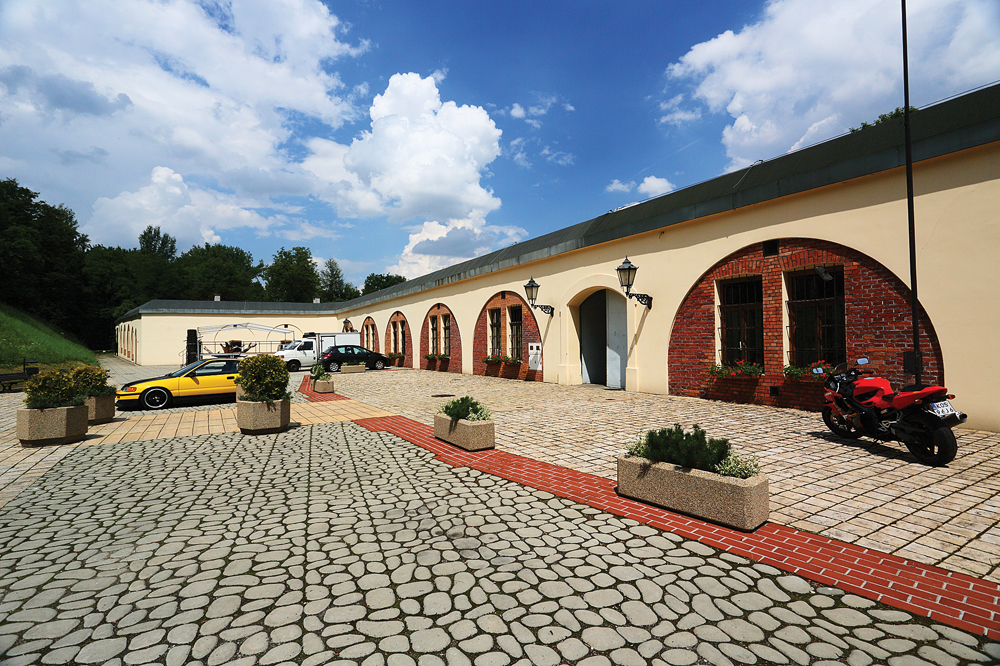
The fortresses of Kraków and Przemyśl meet all the criteria of the potential cross-border inclusion of the fortresses of the former Habsburg Monarchy in UNESCO’S World Heritage List, as presented during the 7th session of the World Heritage Committee in Poland (Warsaw, January 27, 2010.) Since the Middle Ages, the city of Przemyśl had a crucial defense function. The first mentions about a necessity of fortifying Przemyśl (i.e. making it a modern fortress) date back to 1810. The individual stages of the development of the fortress were a response to the important European and world conflicts, and made use of the groundbreaking inventions of the Second Industrial Revolution. That had a direct impact on the development of military construction and communication technologies.
The largest project implemented by the Association of Fortress Communes of the Przemyśl Fortress in last 10 years was the project "Development of the historic complex of the Przemyśl Fortress for access to cultural tourism, stage I" of the Regional Operational Program of the Podkarpackie Voivodeship for 2007-2013. From February 2019, the Management Board of the Association of Fortress Communes of the Przemyśl Fortress began working on several projects that are aimed at both promoting the Fortress as a military tourism product and commemorating and promoting Europe's cultural heritage.Since the Middle Ages, Kraków played an important defense role. Through centuries, the fortifications of the capital city of Kraków protected the center of Polish royal power. After a short revolution in 1846, the Free City of Kraków was absorbed by the Austrian Empire. The Austrian fortifications of Kraków (that have formed the largest ring fortress of East-Central Europe with the passage across the Vistula River Valley) belong to the logical narration of a “fortified Kraków” and are its another chapter. The Fortress of Kraków is a compendium of knowledge about German, French, Italian and Belgian fortifications. The development of the means of observation manifested in an unprecedented masking of the landscape with carefully planted greenery - and became the biggest horticultural investment in the Krakow area in the history of the city.
Slobodanka Babić, architect, Institute for Protection of Cultural Monuments, Novi Sad: The Case of Petrovaradin Fortress
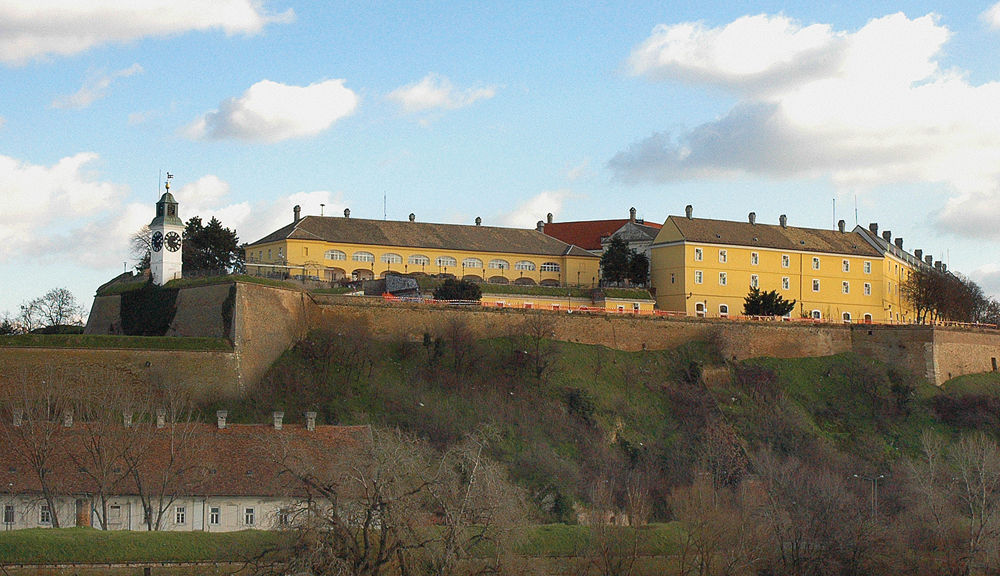
Petrovaradin Fortress, which is a first-rate work in fortification architecture of the 18th century, is one of the most complex, largest and best preserved fortification complexes in this part of Europe. It is of great value to military, state, political, church and cultural history of people from these parts, to the history of fortifications in the Danube region, as well as archaeology, science, urban planning and architecture, arts and visual arts. It was built from 1692-1780 in accordance with the blueprint made by the Austrian military engineers Mathias Kaisersfeld and Luigi Aloysius Ferdinand Marsigli, as well as by Michael Wamberg – the first builder of the Fortress, who applied a system developed by the French theoretician, architect and builder, Marshall Sebastien le Prestre de Vauban. It was put under the protection of the State in 1948. Revitalization of the Petrovaradin Fortress started immediately after the largest part of the fortification complex was taken over from the military authorities (1951). How is it possible that we today find the Petrovaradin Fortress in a fairly bad shape, despite decades of effort and initiative aimed at its preservation and revitalization? When one makes a comparative analysis of the results achieved from activities undertaken to protect and revitalize the Fortress with the types and modalities of management applied, as well as with data on the state of the Fortress before these activities were undertaken, one can conclude the following: achievement of positive results in the protection, revival and revitalization of the Fortress, and of a cultural heritage in general, depends directly on the possibility to ensure a united management system based on good leadership, on the stability of the socio-political and economic environment, which, in turn, is supposed to ensure a stable legal frame and a source of financing, on the education and awareness raising of public opinion – especially of the local community, on the possibility to ensure continuous and multi-disciplinary research projects and to provide conditions for the realization of technical protection of cultural treasures in accordance with adopted principles of conservation – further education of experts, revival of old crafts, production of old materials…
Tomáš Jirouch, Bastion I and the Underground tourist area, tourist guide, Josefov, with Bc. Zuzana Stádníková, Bastion I and the Underground tourist area, head of the tourist area, Josefov, Monika Brychová, Jaroměř City Cultural Center, director, Jaroměř, Tomáš Jirouch, Bastion I and the Underground tourist area, tourist guide, Josefov, Mgr. Ilona Rejzková Zatloukalová - Bastion I and the Underground tourist area, PR and promotion, Josefov, Czech Republic: Fortified Ideal City Josefov
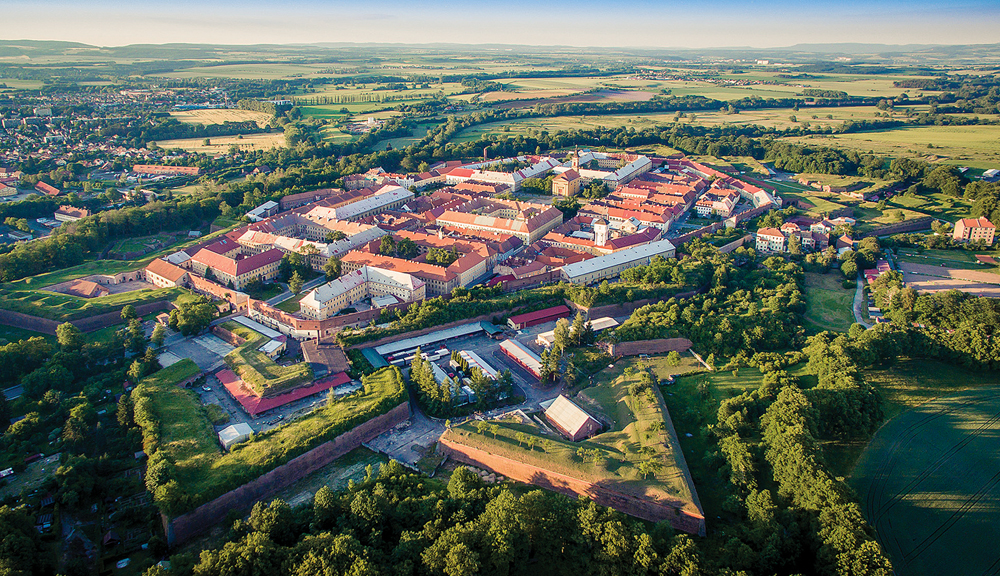
The whole complex of the fortified ideal city Josefov was founded during the reign of emperor Joseph II according to the design of the French engineer Claude-Benoit Duhamel de Querlonde. The foundation stone was laid on October 3, 1780. The purpose of the whole building, which was built on a green meadow, was protection of eastern Bohemia from the incursions of the Prussian troops. Josefov performed primarily the role of an excellent base for storing necessary supplies for the army. The fortified ideal city is remarkable for its internal arrangement of military and civilian buildings and their uniform appearance. Josefov lost its status of the fortress after more than a hundred years. Later Josefov served as the POW only after the World War II, during which it was used mainly as a training ground of the Protectorate government forces and Wehrmacht. But it was the Soviet Army occupation (1968 – 1991) that changed the face of the fortress town more than the World War II. Nevertheless, it was neither occupations by enemy armies nor the demolition of protection walls but the final withdrawal of military forces that meant the far greatest impact on the life within the old star fortress from its birth so closely connected with armies. In historical buildings you can currently find touristic areas and its offices, many various museums, flats, shops, restaurants, guesthouses, the seat of the National Heritage Institute, artistic studios, galleries etc. Today, between the walls, you can found an equestrian area, a festival area, pastures for horses and sheep, promenades which are used for walks and jogging, former training ground which has been transformed to meadows, where many rare and protected animals can live. Some fractions of underground corridors are opened for tourists during the season. Despite the efforts of volunteers, civil associations, municipal organizations and private individuals, Josefov has currently several problems, which make it unattractive for tourists and potential new inhabitants - extensive brown field sites, a large number of socially unadaptable residents, empty flats, few job opportunities, insufficient level of services, unattractive appearance of some parts of the city and not enough money for their reconstruction.
Ivana Haničar Buljan, architect, Ratko Vučetić, art historian, Institute of Art History, Zagreb, Croatia: Tvrđa Fortress in Osijek – the problems of revitalization
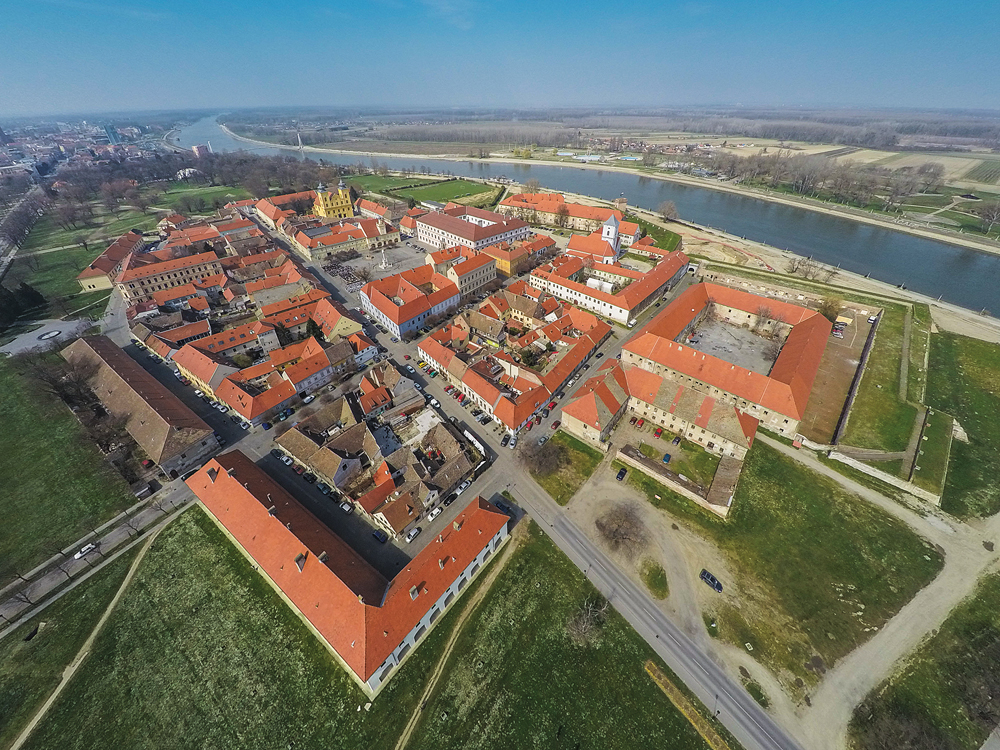
The area of Osijek’s Tvrđa fortress represents a specific cultural heritage monument in terms of its historical, cultural and formal elements. Following the historical development from the medieval times when it was a merchant settlement in the property of the Cistercian order, to the period of the Korog family governance, to the Ottoman town, and finally to the Baroque fortress city, the structure of the settlement changed accordingly. During the 19th and the 20th century, the fortress of Tvrđa lost its strategic role, and in the new context, the focal point of the city life shifted from the historic core to the former suburban areas. In recent years, the interest for the revitalization of Tvrđa, the historic centre of Osijek, has been growing. The presentation will point to the significance of the historic and spatial research of Osijek’s Tvrđa, to the understanding of both functional and morphologic changes of the urban structure and the interpretative possibilities of the historic heritage in question. The interpretation of the site that emphasizes not just its real and symbolic architectural and spatial values, but is also as a point of departure for creating strategies of reconstruction and revitalization of its historically important spaces. Keeping in mind that the historic centre is not just of mere symbolic importance, a repository of building and urban planning heritage, the analysis of the historic changes and their identification could bring about a new vitality and livelihood of the historic centre, integrated within the contemporary commercial and social life. While conducting research of Osijek’s Tvrđa, three sets of issues have been identified:
• The relationship between Tvrđa and the contemporary centre of Osijek and the possibilities regarding the inclusion of the natural and cultural heritage potential of the wider surroundings.
• The rehabilitation of the bastion assemblage of Tvrđa and the regeneration of the degraded structures of the historic whole
• The current condition and the usage of the building fund of Tvrđa, and the contemporary projects as the possible starting points of the sustainable development
Tuia Giannesini, architect,Venezia, Italy :
The Ideal City of Palmanova
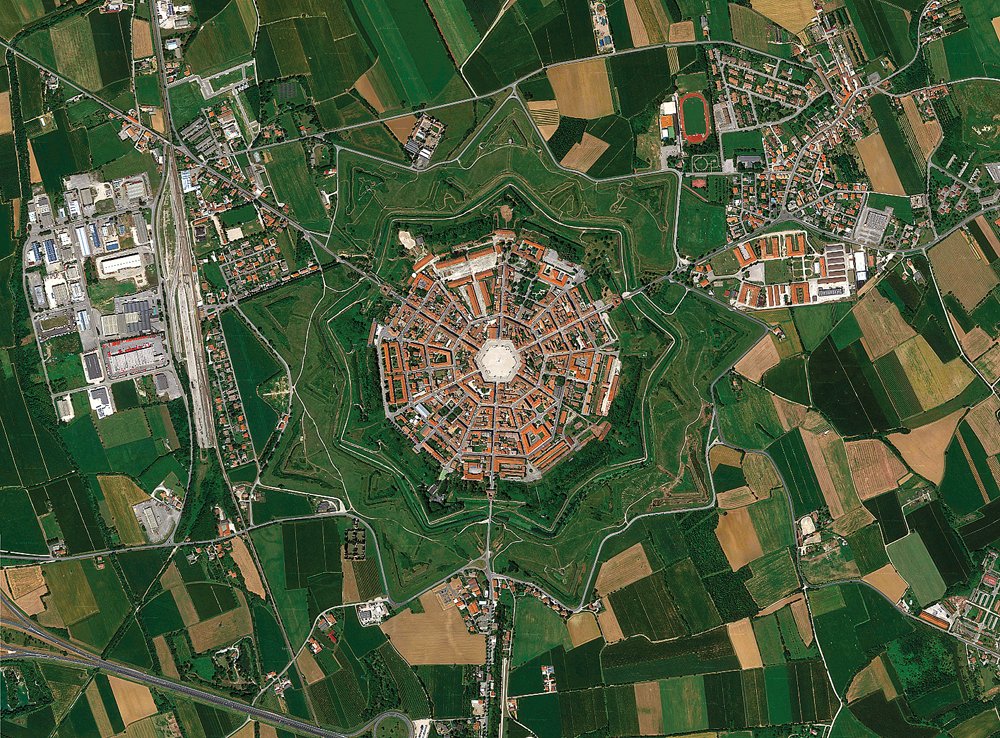
Palmanova, renowned for its nine-pointed star shape, is one of the most remarkable examples of Renaissance new town. The Venetian Republic, after the first wars against the Ottomans, felt the necessity to have a stronghold to defend not only its territory as well as the whole Christianity against the muslim attacks and decided to build a fortress in the high North-East, at what was at the time, the Austrian Empire border. In a period of revolutionary thinkers, where the influence of the ancient philosopher got mixed with the daily life problems, the question about harmony and balance for the perfect form of government got answered in the shape of a city of designed perfection. The Ideal City, like the one depict in the painting attributed to Francesco di Giorgio Martini, perfectly centered, symmetrical and concentrical, the square with the temple in the middle, and all the rest equally distributed around, embraced by the walls, that, while defending, they would teach, with writings on the wall, the most common knowledge for all to learn; that is how Tommaso Campanella describes the City of the Sun in 1602.
And so was built Palma in 1953 and became such a strong symbol of power none ever dared to attack it, remained under the Venetians for two centuries until the fall of the Republic and, after a brief Austrian occupation, got renamed Palm la nuova, Palmanova, by Napoleone.
Patrizia Valle, expert in architecture heritage enhancement and restoration, Venezia, Italy: The safeguarding and enhancement of Medieval Walled Towns in the north of Italy
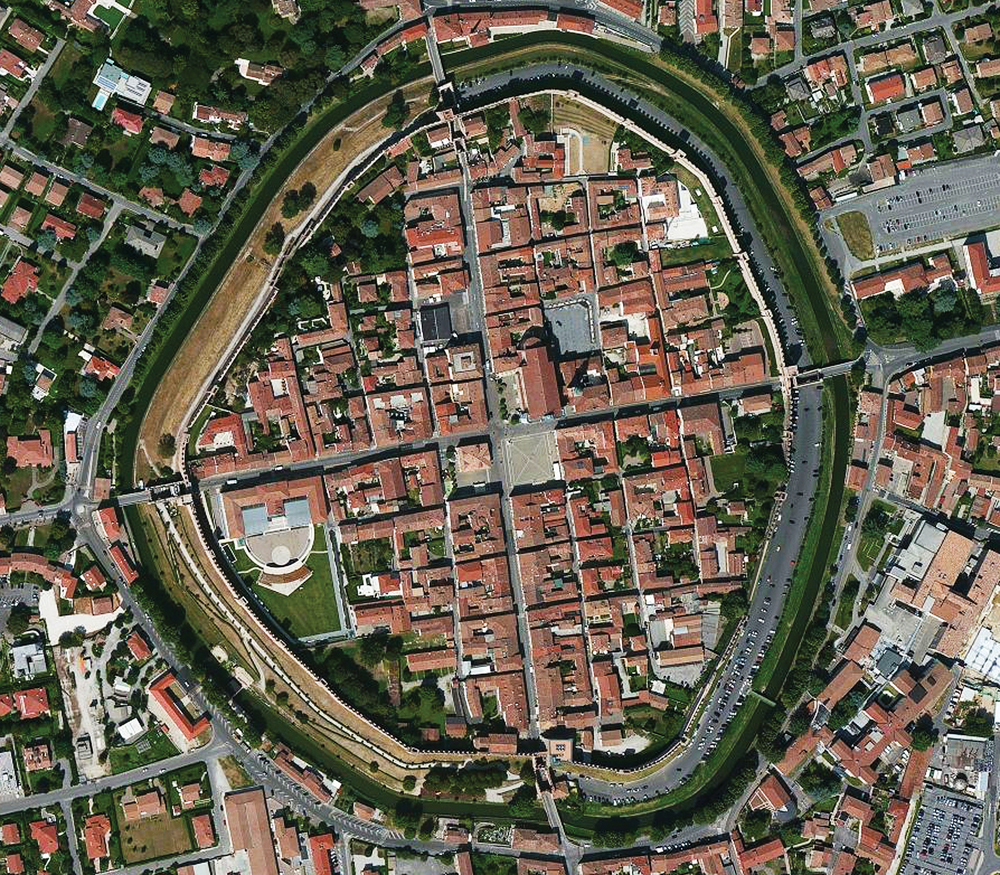
Among the new foundations towns, created in northern Italy between the XII and XIII century, known as ”terre nuove”, the walled town of Cittadella, founded in 1220 by determination of the city of Padua, is probably the most interesting one. The morphological and typological aspects, combined with the exceptional size and integrity of its walls, make of Cittadella a unique example. Based on an elliptic shape, the town walls system is composed by thirty-two curtains wall structures. The objective is to demonstrate, through this example, the possibility of conservation and valorization of these historic Walls and Castles. The characteristic of the project that give it a vantage is the strategic geographical location, as an important architectural landmark, that has influenced over the centuries a vast territory. The disadvantage is that, despite its beauty, for the last two centuries, it has lost its military significance, own and its walls have been abandoned to a serious state of degradation. It could exploit to its advantage that the rampart walk once again completed represents the Ariadne’s wire connecting together different spaces along the walls: exhibition spaces and for culture and events. The Medieval network of the Veneto Walled Towns should be considered linked to a larger system combining Medieval Europe in a single system. Starting in the late Middle Ages, an integrated network of Walls and Fortresses were constructed, in most cases on existing medieval buildings, Ottomans or even Byzantine. The potential solutions is their cultural preservation and promotion.
